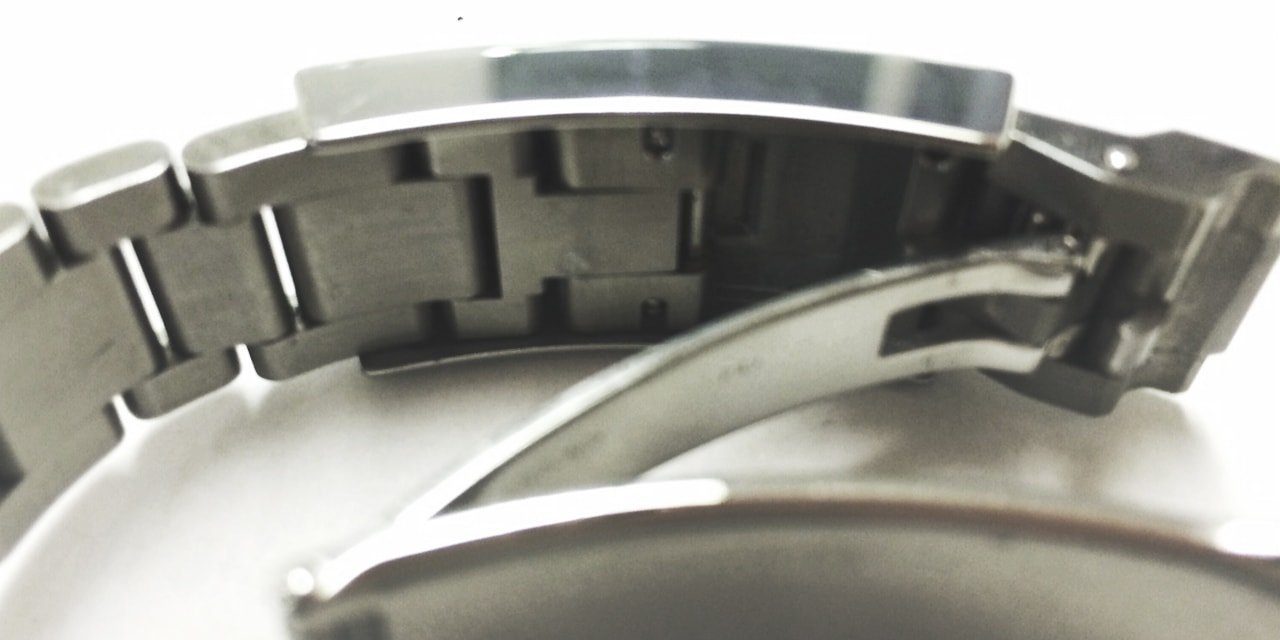Rolex Bracelet Clasps – Always a debate
Rolex bracelet clasps have always been a point of debate. An important part of the Rolex bracelet, yet for years the clasp was a point who many thought Rolex had under-engineered. Up until recently the Rolex clasp was a stamped piece of steel that closed via a somewhat spring loaded compressed fit. Although these clasps were not milled like a Rolex case or appeared to have the same precision fit as other Rolex parts, the Rolex flip or flip lock clasp was, and still is, a very durable aspect of a Rolex watch.
Holding the President, Jubilee, or Oyster bracelets in place required Rolex to design a clasp that was easy to use, easy to maintain, yet was durable. Many other manufacturers utilized clasps that required springs or buckles, but Rolex’s design was a simple compress fit onto a clasp hinge what possessed enough springy tension that the clasp cover stayed locked in place. For extra protection against the clasp inadvertently opening, Rolex included an extra folding lock on the sports and diving models known as the “Fliplock clasp.” A very simple design, yet was durable, easy to adjust the tension, and it fit within the overall Rolex design.
Starting in the mid-2000’s Rolex introduced newly engineered clasps to fit alongside Rolex’s new solid stainless or gold bracelets. As Rolex introduced solid bracelet links, they also introduced milled bracelet clasps, cast and milled clasp hinges, and the Easylink. The milled clasps feel stronger and look more robust, require no adjusting of the clasp tension over throughout the years of wearing the watch, and for most of these clasps, included the Easylink, a method for extending the bracelet about 5 mm when the weather and wrist sizes change. On the sports model watches, Rolex included an equivalent of the older Fliplock with a similar spring loaded locking system that is found on the GMT, Submariner, YachtMaster, and DeepSea models.
With the advent of cast and milled clasps, Rolex introduced two function specific clasps on their diving watches. The DeepSea SeaDweller utilizes the Glidelock extension system which is a piece of engineering beauty. The Glidelock extension system allows the user to expand the band to be adjusted by 18mm in 1.8mm increments without removing the watch from the wearers wrist.
On Rolex’s Submariner, Rolex utilizes the same conceptual Glidelock Extension System, but the wearer has to remove the watch in order to make 2mm adjustments for up to 20mm of adjustment, plenty of room for the watch to fit over a 3mm thick wet suit.
Although the new clasps do not require periodic spring tightening as with the older “tuna can” clasps, the clasp is held together with two additional springbars that require inspection at service. Despite the extra maintenance required, what was once considered a shortcoming of Rolex watches, the bracelet clasps are now in the same league as the watch itself. Rather than Rolex wearers being underwhelmed with the Rolex clasp, these newly designed and engineered clasps are yet another standard of Rolex quality that sets itself apart from other watch brands.





